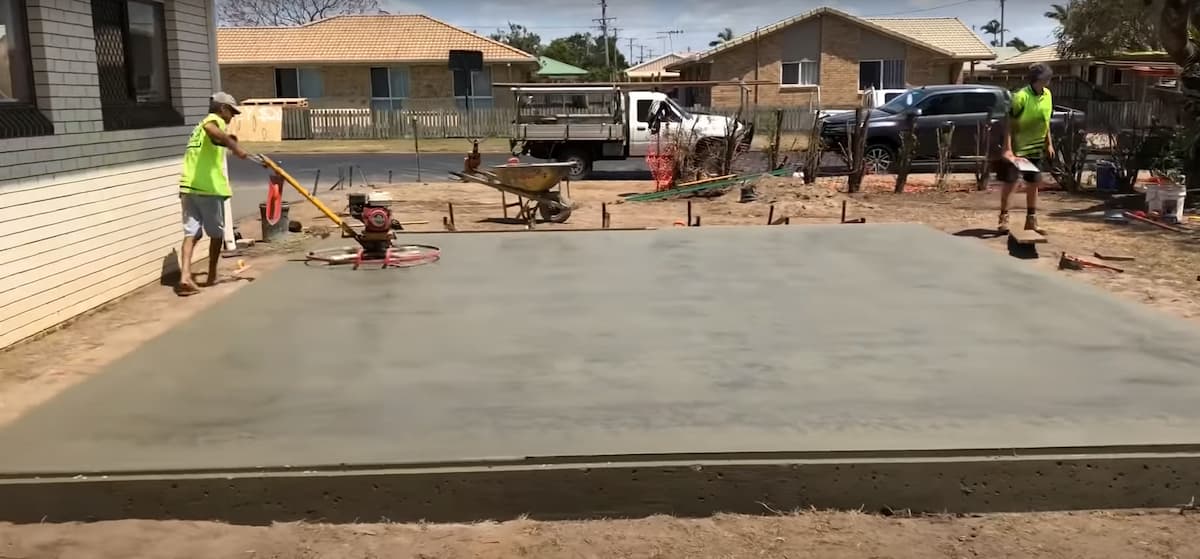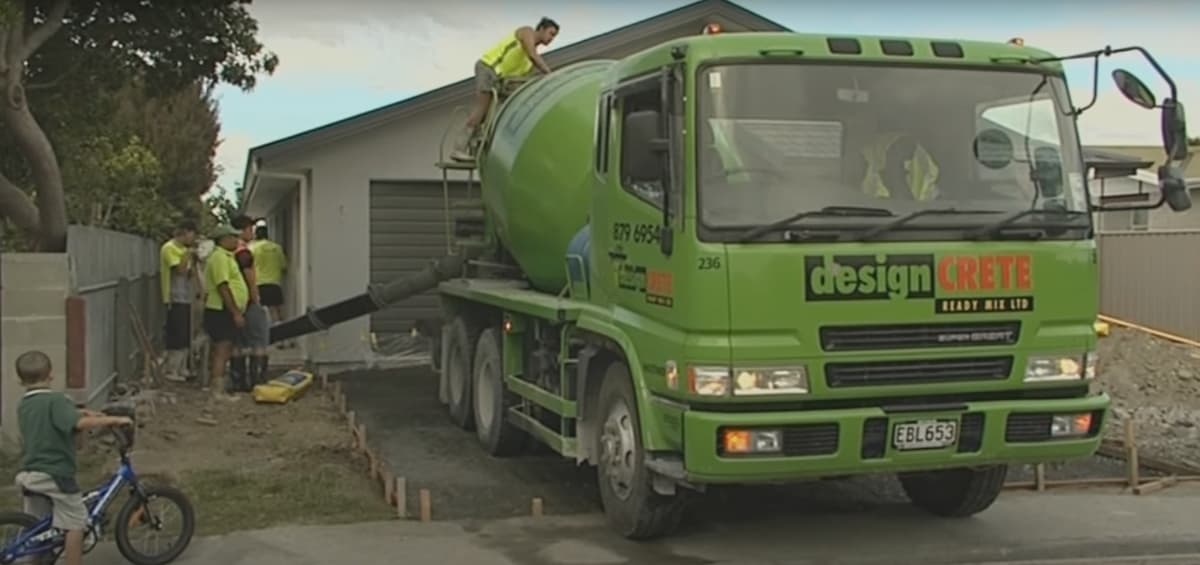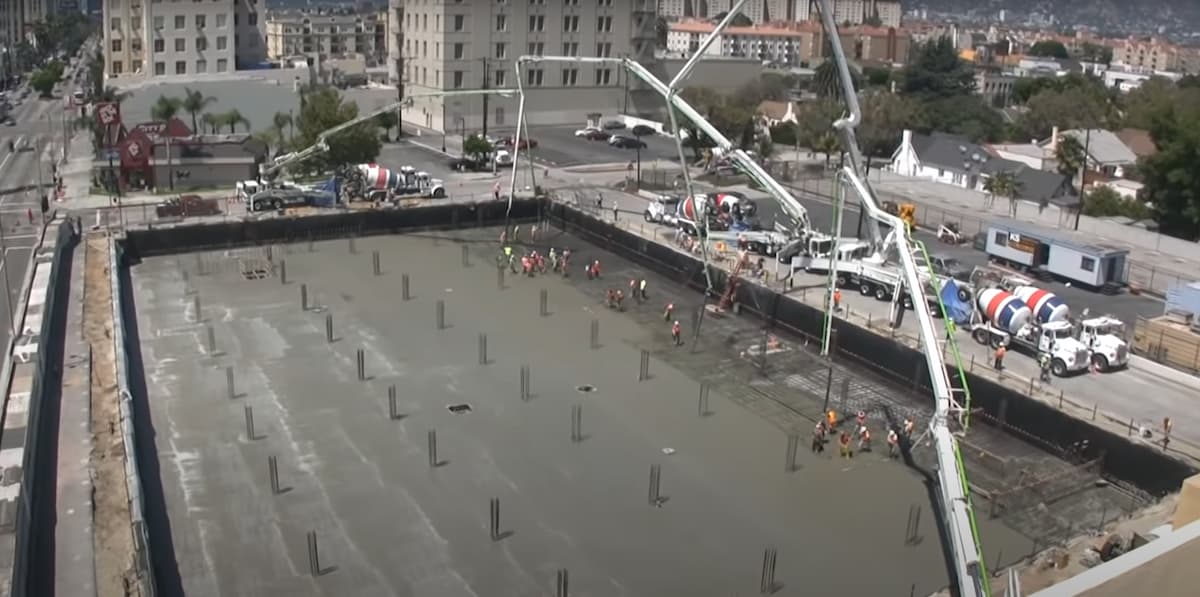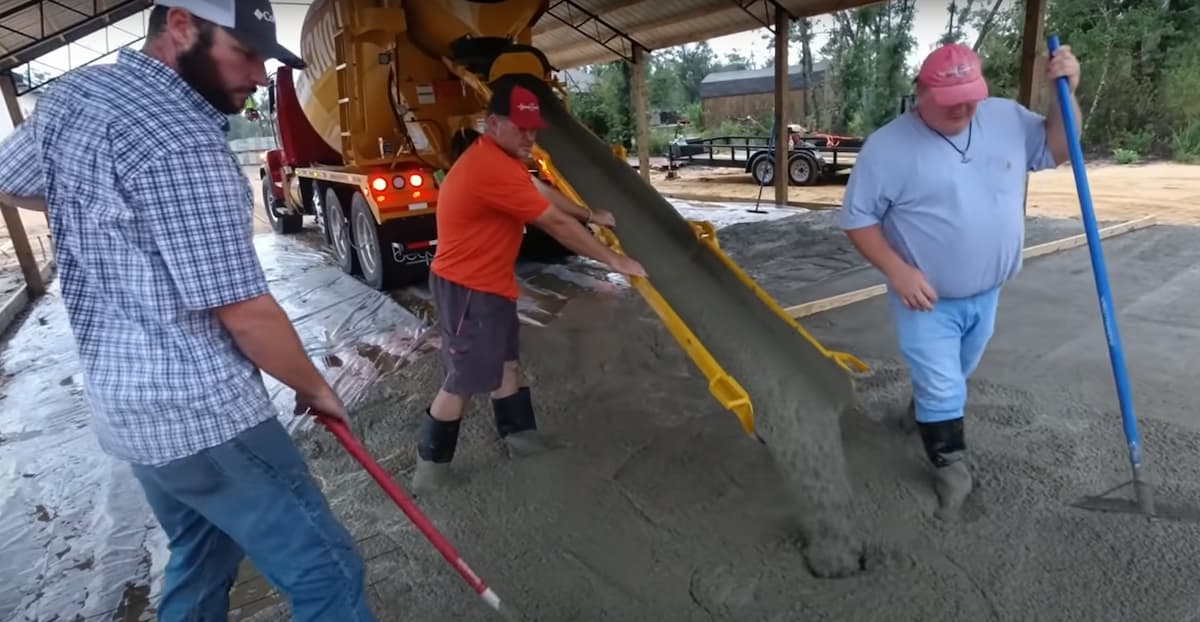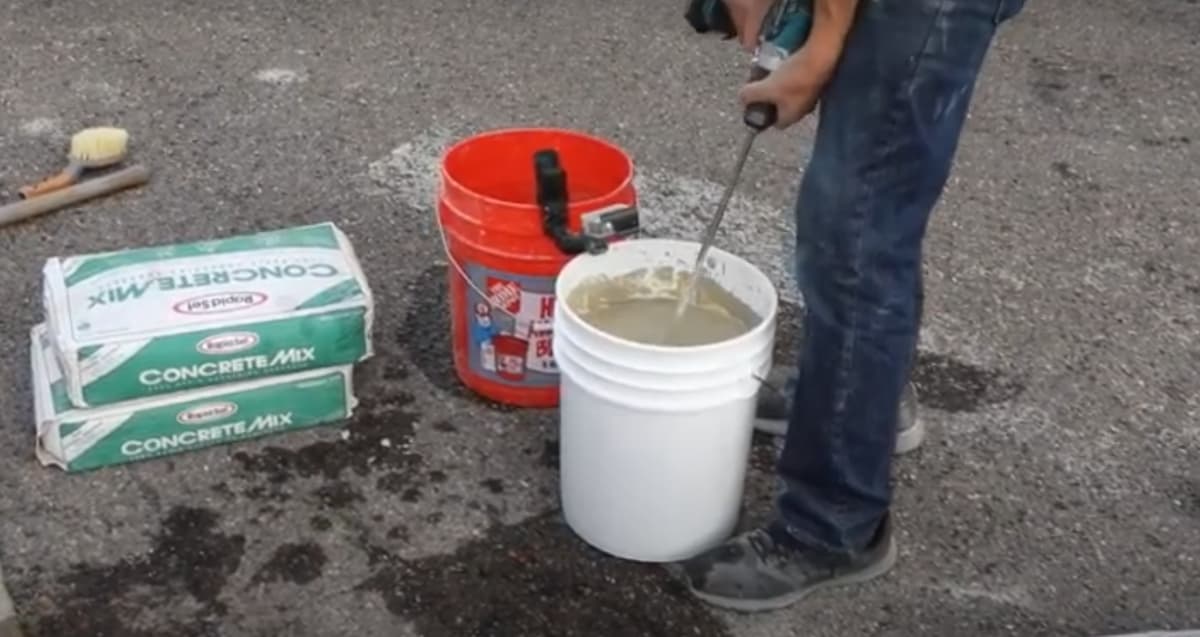
Rapid set concrete is a trading name for the manufacture of small precast concrete objects which are manufactured at high speed using reusable moulds or formwork. The term is usually used in association with moulds designed to be filled with concrete, vibrated and then extracted immediately to leave a solid set shape after removal from the mould.
A typical application would be for steps, kerbs or copings that are required on-site by an end-user within a few hours of being made.
A Common Use for a Set Concrete Mix?
Most commonly today commercial operations use modern lightweight materials for both the formwork and the dry mix used inside them. It’s a common method. Such products can now easily be transported long distances without too much weight penalty so production plants may well be sited near where their product will eventually be used whilst still allowing high-speed turnaround of the product to meet end-user delivery requirements.
What is Concrete?
Concrete is made up of a few bags of cement, sand, aggregate (rock or gravel) and water. The amount of bags needed depends on the location and the job itself. The additions to these four main ingredients are selected for their effect on the properties of the final product. Aggregate affects bulk (workability), early strength, ultimate strength and durability. Water affects workability and curing time, cement affects hydration rate (speed), admixtures affect workability bleeding/segregation resistance, shrinkage compensation/control/prevention etc. Additives such as fibre give very specific effects that depend upon the exact type of fibre used. Other factors affecting concrete include temperature, the composition of concrete being placed into formwork with it, ambient temperature at the time of placement, the presence of admixtures that affect workability, delay action admixtures.
What is Rapid Set Cement?
Rapid set cement is a trading name for cement that has been manufactured specially to give reduced hydration times or workability. Rapid set cement is available in a range of grades, the most common being RAPIDO 10 and TENSA SET. Both these rapid set cement can be used in rapid setting concrete systems.
What is Quick Set Concrete?
Quick set concrete is a trading name for a range of precast products made from rapid-set cement. It does not refer to the production or mix process that makes the concrete products, but to the timescale in which the product is ready for use. Quick set concrete is precast and therefore can be in all kinds of range of precast shapes, sizes and configurations. Quick set concrete is ideal for a wide variety of applications from kerbs and paving slabs to drainage, manholes and commercial units. It is very popular for use in footpaths, driveway kerbs, fence posts and roadsign/streetlight bases as it does not require any additional finishing such as screeding.
Can you Use a Set Concrete Mix in Australia?
Yes, a set concrete mix is available in Australia and New Zealand and is available for various applications. It’s an alternative to traditional forms of concrete due to its lightweight nature and high strength and durability properties.
How to Use Quick-Set Concrete?
Rapid set cement has a specific method and must be mixed with clean dry aggregates and well mixed into a consistent mix design before adding water. The amount of water added during mixing will depend upon ambient temperature, the size of the components being made and batching technique employed but should give a well-workable mix able to be placed “by hand” through an appropriate nozzle/pump.
During this method, the object is filled and vibrated, lifted out of the formwork and placed on a levelling bed. No further processing is required before the item will be ready for service.
An alternative technique sometimes used is to put wet concrete into the formwork and then immediately pump in dry rapid set cement mix using the same formwork. The object can be left until almost ready for removal from formwork however this will significantly reduce the product’s properties (both strengths & times) as well as increasing its susceptibility to damage during de-moulding.
Quick Set Concrete vs Normal Concrete?
The use of rapid set cement can potentially produce “lightweight” concrete products that may offer significant advantages over normal concrete in situations where the end-user does not have access to transport with sufficiently capable handling equipment. By producing very small batches, it is possible to achieve very high production speeds which can significantly lower the labour costs involved in manufacture.
Advantages of Quick-Set Concrete
1. High strength. Concrete has a compressive strength of typically 50-70N/mm². Using rapid set cement can reduce this to 10N/mm² or less hence making products lighter.
2. Low water content. Concrete has a water/cement ratio between 0.4 and 0.7 making it very wet. Using rapid set cement can reduce this to as low as 0.1 hence significantly reducing processing times and shrinkage.
3. Damage reduction. By applying a high shear mix design one can reduce damage to finished products by reducing the time they are in contact with formwork.
4. Low heat of hydration. Rapid set cement achieves this by using high-temperature clinkers.
5. Low bleeding water. Rapid set cement is designed to give close control on hydration.
Disadvantages of Quick-Set Concrete
1. High cost. All applications of rapid set cement are more expensive than normal “high alumina” cement so the cost of the product will be higher.
2. Quality control. Because rapid set cement is made without batching in a factory, they may have different properties when being used in the same area hence leading to problems in achieving consistent quality in products.
3. Fines bleed. Rapid set cement is designed to give close control on hydration. However, some rapid set cement is made with special high Fines content which makes them very susceptible to bleed water hence making them less effective over time.
4. Slow strength gain. A slow strength gain of about 1N/mm² per day reduces the practical uses of quick-set cement unless they are formulated to give faster strength gain.
5. Shrinkage. Slight shrinkage of about 1-2mm is experienced with quick-set cement due to the rapid loss of water after placing in forms. This can be offset by the use of high fineness aggregates which do not absorb as much water, but this increases cost and causes other problems.
Rapid Set Concrete Curing Time?
The curing time of quick-set concrete is very low ranging from 2 hours to overnight.
How Long does It Take for Rapid Setting Cement Mix to Cure?
Rapid-setting cement mixes are designed so that they may either be placed, trowelled and struck off immediately or subjected to storage underwater before further processing.
If you plan to store the mix underwater, you should ensure that:
* The rapid-setting cement does not contain any deleterious chemical admixtures which would be unstable in the presence of unconfined water
* It has sufficient storage stability to ensure that it will remain workable while submerged for a period of time before further processing is carried out.
If stored above ground, the mix should be protected from weather and stored out of the sun.
If stored below ground, all possible care must be taken not to contaminate it with organic or corrosive items or bags. Safety first.
Rapid Set Concrete for Fence Posts
Yes, the quick-setting cement is suitable for use as a concrete mix for various fence posts, clothes hoists, pergola posts, all fencing or heavy-duty posts. The water to cement ratio may be varied for this purpose.
To be profitable, the concrete mix must contain sufficient cement content to ensure that it will harden rapidly and maintain its strength until complete curing is achieved.
Rapid set concrete is suitable for use in places where large quantities of fly ash are readily available since the ash helps reduce the cost of the mix.
Rapid Set Concrete for Retaining Wall?
Yes, rapid-setting cement is suitable for use as a heavy structural material where strength and resistance to weathering are required. The water to cement ratio may be varied for this purpose.
To be profitable, the concrete mix must contain sufficient cement content to ensure that it will harden rapidly and maintain its strength until complete curing is achieved.
What to Do before Mixing the Concrete?
1. Ensure that the site is well prepared.
2. Ensure that the foundation and reinforcement work will give the right support to the structure.
3. Ensure that mild steelwork such as temporary shuttering, props or shoring is in place if required for construction stages.
4. Ensure that weather conditions will not be against you during mixing and curing.
5. Ensure that the water supply is available in adequate supply.
6. Always keep in mind safety precautions while mixing concrete.


